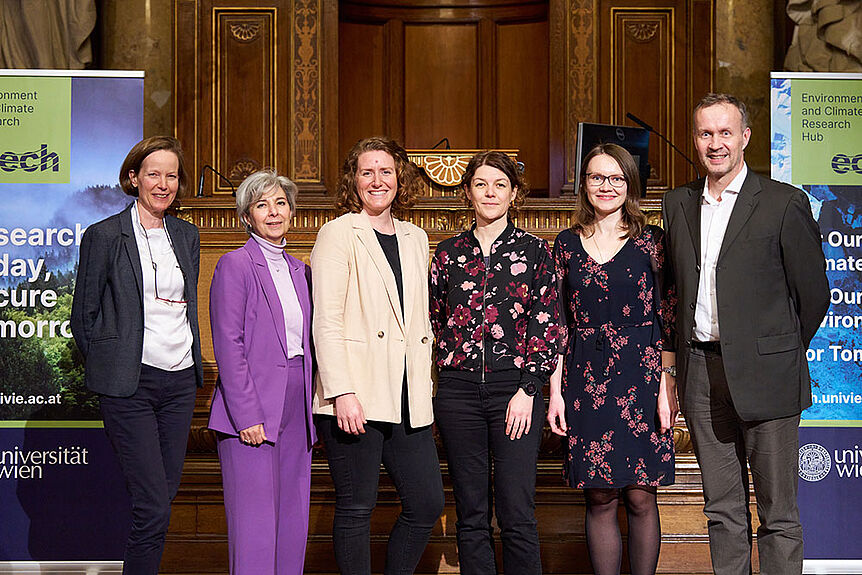About Us
The Division of Terrestrial Ecosystem Research aims to advance the fundamental understanding of how soil microorganisms and plants respond to and in turn shape their abiotic and biotic environment, and what consequences these interactions have for the functioning of the Earth’s ecosystems.
Researchers at TER address pressing environmental issues, such as the impact of climate change on ecosystem functioning and the role of soils in the global carbon cycle and in food security.
News
Events
Latest Publications
Cusack DF, Christoffersen B, Smith-Martin CM, Andersen KM, Cordeiro AL, Fleischer K et al. Toward a coordinated understanding of hydro-biogeochemical root functions in tropical forests for application in vegetation models. New Phytologist. 2024 Apr 1;242(2):351-371. Epub 2024 Mar 20. doi: 10.1111/nph.19561
Figueiredo Lugli L, Fuchslueger L, Vallicrosa H, Van Langenhove L, Ranits C, Roc Fernandez Garberi P et al. Contrasting responses of fine root biomass and traits to large-scale nitrogen and phosphorus addition in tropical forests in the Guiana shield. Oikos. 2024 Apr;2024(4):e10412. Epub 2024 Jan 16. doi: 10.1111/oik.10412
Lintner M, Schagerl M, Lintner B, Wanek W, Golen J, Tyszka J et al. Impact of pesticides on marine coral reef foraminifera. Marine Pollution Bulletin. 2024 Apr;201:116237. Epub 2024 Mar 8. doi: 10.1016/j.marpolbul.2024.116237
Bubl M, Heinz P, Wanek W, Schagerl M, Hofmann T, Lintner M. Impact of heavy metals (Cu, Fe, Pb, Zn) on carbon and nitrogen uptake of the diatom-bearing benthic foraminifera Heterostegina depressa. Heliyon. 2024 Mar 30;10(6):e27229. doi: 10.1016/j.heliyon.2024.e27229
Arellano-Caicedo C, Beech JP, Bengtsson M, Ohlsson P, Hammer EC. Quantification of growth and nutrient consumption of bacterial and fungal cultures in microfluidic microhabitat models. STAR Protocols. 2024 Mar 15;5(1):102784. Epub 2023 Dec 15. doi: 10.1016/j.xpro.2023.102784








